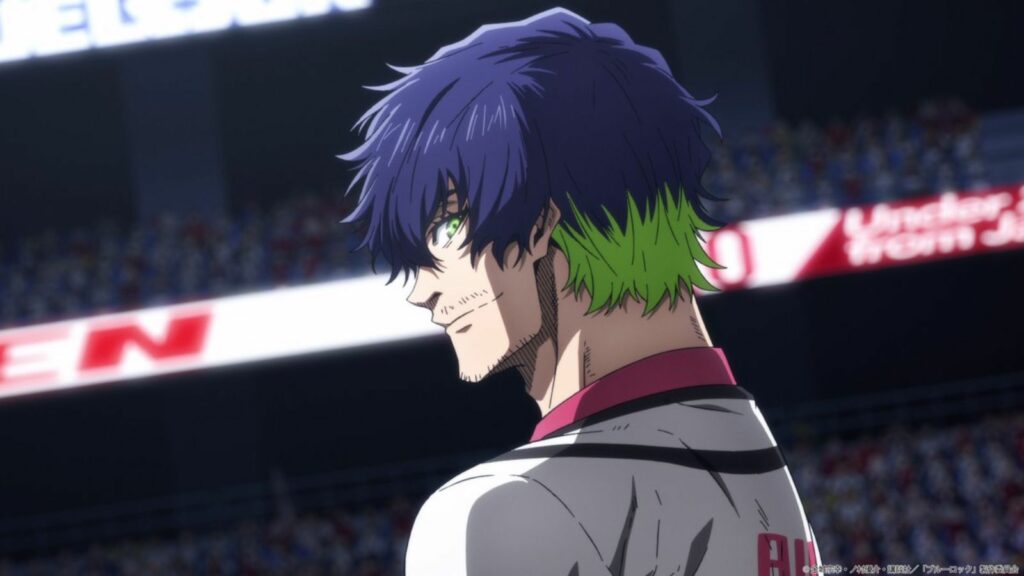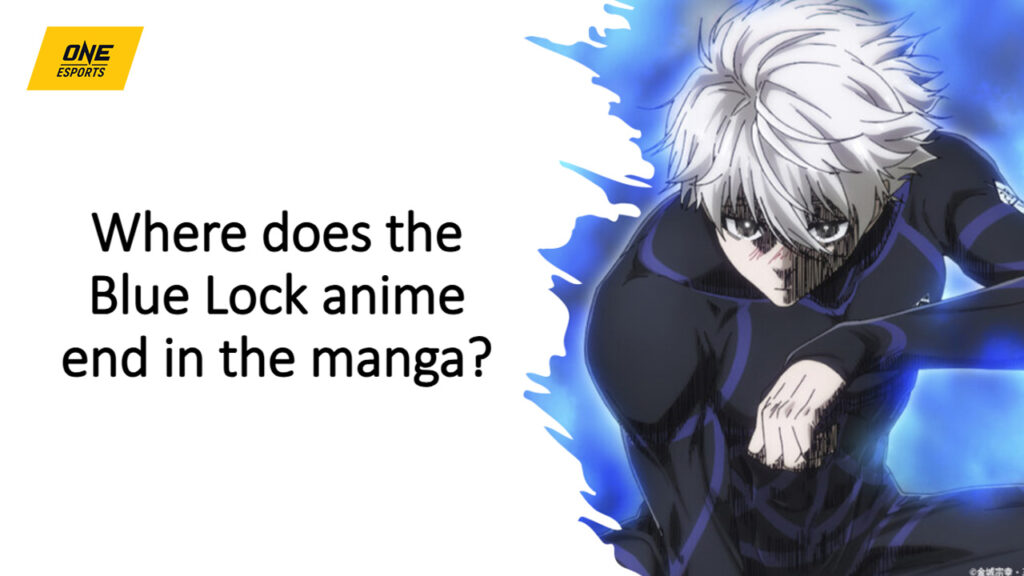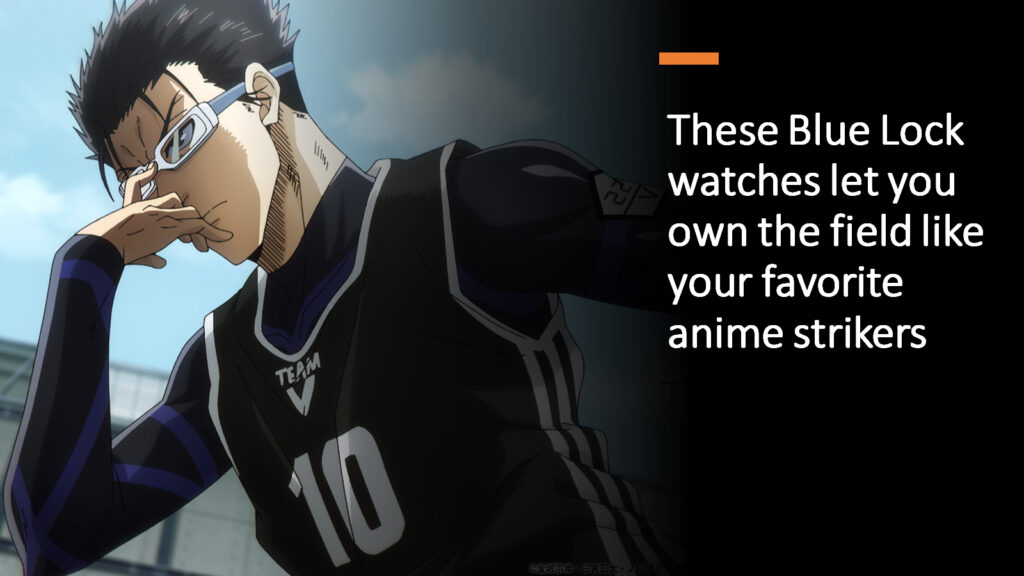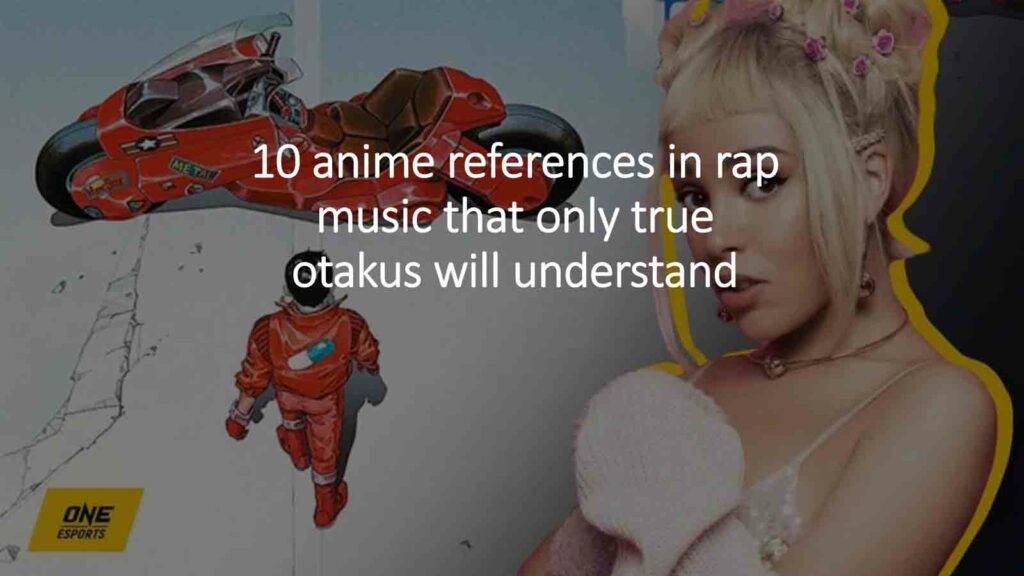Blue Lock season 2 episode 7 brings the intensity of the Blue Lock program to the national stage as its top players face Japan’s elite U-20 squad.
With high expectations surrounding Sae Itoshi’s performance, the spotlight is on the superstar’s every move—but the Blue Lock players have their own ambitions.

Armed with an aggressive new offensive strategy crafted by Jinpachi Ego, they are ready to break traditional playstyles and challenge the U-20’s dominance.
As the whistle blows and the teams clash, a fierce test of talent and willpower awaits, promising a game that could redefine Japanese football.
Blue Lock season 2 episode 6 recap

Blue Lock season 2 episode 6, titled The Grand Stage, opened with U-20 squad team captain Oliver Aiku confronting Japanese superstar Sae Itoshi. Aiku informed Sae about a recurring issue with their team’s ace, Shuto Sendo, who had again clashed with Ryusei Shido.
However, Sae dismissed the importance of keeping Sendo on the team, suggesting they should remove him. Aiku argued that removing Sendo would be problematic since many U-20 players were prepared to boycott the upcoming match against Blue Lock if Sendo were kicked out. With tensions rising, the team was on the verge of an internal crisis.

Aiku then requested that Sae allow the U-20 team to play without Shido, implying that it wouldn’t make little difference if Sae were as skilled as he claimed. Sae questioned whether this was a directive from the JFA (Japanese Football Association) or from Aiku himself. Aiku clarified that it was 99% his request, motivated by his desire to test Sae’s abilities, and only 1% due to his responsibility as team captain.
Ultimately, Sae agreed to move forward with Sendo instead of Shido. However, he made it clear that his abilities weren’t in question—it was up to the U-20 squad to prove themselves to him.

The episode then shifted to the Blue Lock team’s preparations on the final day before the match. Excitement among fans grew as the game drew closer, though most fans were primarily interested in seeing the U-20 squad, particularly Sae, and knew little about the Blue Lock program or its players.
As Aiku prepared for the match, he reflected on his journey to becoming one of Japan’s top football players. Growing up, he had been taught to play by the rules and follow his coaches’ instructions. This experience led to his fascination with the Blue Lock program, which challenged traditional training approaches.

The match preparations transformed the Blue Lock stadium into a grand event with a festival atmosphere outside. Meanwhile, Rin Itoshi reminisced about his childhood and the influence of his older brother, Sae, who had encouraged him to play football. Together, the brothers had achieved early success as young sports prodigies.
In the hours before the match, the stadium was packed with fans, with jerseys and merchandise on display. Even Yoichi Isagi’s parents attended, marveling at how far their son had come. Many fans, however, still overlooked the Blue Lock players, dismissing them as failed strikers.

Fifteen minutes before the match, Blue Lock’s coach, Jinpachi Ego, briefed the team in the locker room, announcing their twelve reserve players. Ego also revealed that Shido would not be in the U-20 team’s starting lineup. This surprised the Blue Lock players, who speculated that Shido’s exclusion might be due to his inability to integrate with the U-20 team.
Excitement was palpable as the Blue Lock squad lined up beside the U-20 team. Gin Gagamaru told the opposing goalkeeper that this was his first time playing the position, while Aiku informed Yoichi that Shido would not join the match. As both teams walked onto the field, the crowd cheered for the U-20 team.

On the field, Yoichi took in the atmosphere, awed by the crowd and realizing how far he had come since joining the Blue Lock program.
The match began with the Blue Lock team on the offensive. Yoichi, Rin, and Seishiro Nagi, playing as forward strikers, launched a swift attack.
Blue Lock’s formation was a 4-5-1, positioning Rin closest to the U-20 goal. Ego’s strategy involved Tabito Karasu, who could both support the attack and drop back to form a three-person defense alongside the two center-backs.

When Tabito dropped back, Blue Lock’s side-backs, Meguru Bachira and Hyoma Chigiri, could move up the field, transforming the formation into a dynamic 3-6-1 “Nitro” formation. Ego believed this approach allowed Blue Lock the flexibility to score from anywhere on the field, emphasizing an aggressive, all-out attack.
Bachira challenged U-20 defender Hayate Haru to a one-on-one, showcasing his impressive dribbling skills to break past Haru and loft a pass to Yoichi, who prepared to take the match’s first shot. However, Aiku intercepted, breaking up the play with surprising speed. Yoichi was stunned, unable to understand how Aiku thwarted their plan.
Aiku then explained that strikers were often likened to thieves and defenders to police. As long as he was on defense, he wouldn’t allow any goals to be stolen. This comment sparked something in Yoichi, fueling his determination to challenge Aiku and reach his “flow” state on the field.
Blue Lock season 2 episode 7 release date

Blue Lock episode 31, the seventh episode of season 2, airs on Saturday, November 16, 2024, at 7:30 a.m. Pacific Time (PT).
The release times and schedule for international viewers vary based on their time zone.
| BLUE LOCK SEASON 2 EPISODE 7 RELEASE DATE TIME ZONES | SATURDAY, NOVEMBER 16/TIME |
| JST (Japanese Standard Time) | 11:30 p.m. |
| GMT+8 | 10:30 p.m. |
| ET (Eastern Time) | 10:30 a.m. |
| CT (Central Time) | 9:30 a.m. |
| GMT (Western European Time) | 2:30 p.m. |
| CET (Central European Time) | 4:30 p.m. |
| IST (Indian Standard Time) | 8 p.m. |
Where to watch Blue Lock?
Blue Lock is available on the following platforms:
| BLUE LOCK PLATFORMS: |
| Crunchyroll |
| Netflix |
| Hulu |
Availability may differ depending on your region.
READ MORE: The 7 most iconic blue-haired anime characters who are much cooler than you


